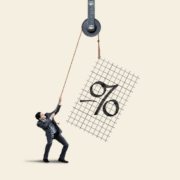News from Switzerland and Turkey
Trouble in Swiss Employment
This story from Switzerland will be ignored, lest it generate cognitive dissonance. The mainstream looks at a few carefully curated statistics. I encourage you to do a Google search on “marginal productivity of debt”. My articles are all over the first page of results. This is not because I am such a prominent economist. Nor is it because this is a term I coined (e.g. “yield purchasing power”).
It is because marginal productivity of debt does not sell the Narrative. The economy is booming. Stocks are up, which is the main thing. Also GDP and employment.
The headline says it all: Older People Marginalised on Swiss Labor Market. That is not what you’d expect from the mainstream macro statistics. For that, you need to be armed with a theory of interest rates that is not from the Medieval era.
Swiss interest rates are negative from one-day maturity all the way out to the 10-year bond. How soft must be demand for credit? Soft demand for credit belies the story told by the mainstream stats.
The net present value of a wage (which is a stream of payments into perpetuity) is very high. How do you even calculate net present value when interest is negative? That means the burden of paying wages is commensurately high. Employers will feel this intuitively, even if their accountants can’t measure it.
Employers may not be laying off workers (in part, this could be due to lack of labor flexibility). Yet. But the curious fact remains. Whatever the unemployment number may be (2.4% is the July figure), clearly new employers are not eager to hire old employees who leave other firms. Demand for credit is not the only thing soft in the Swiss economy. So is demand for the marginal worker.
Everything is booming, yet 86% of people over 50 who lose their jobs never find stable work again.
Counterfeit Gold Bonds in Turkey
As you might imagine, I read everything I can find regarding gold bonds and interest on gold. So I was fascinated by this story from Turkey.
“These are not the gold bonds you’re looking for.”
The Ministry of Treasury and Finance said one of the goals is to “bring idle gold into the economy”. But gold does not play a role in the economy today. In our paper standard, gold is bought and sold, but not lent and borrowed. It does not extinguish debts.
So what will the Turkish government do with the gold? The Ministry does not say. We assume they will sell it.
One would think that if they had a gold income, and wished to replace their paper bonds with gold bonds to eliminate the price risk, it would be a big story.
The Ministry does say they will pay interest at 2.4% in Turkish lira, with returns “indexed” to the gold price. At the end, the investor can get kilobars or gold coins.
I will not cast aspersions or make allegations without evidence. Instead, I will say that a gold bond is an extraordinary thing. A proper gold bond is a big deal.
A Very Big Deal.
The issuer, for its own sake, if not for the sake of the world, ought to talk about all aspects of the bond. What is its purpose, mechanics, use of proceeds, vision, game plan, financials, and economics?
It is not sufficient, in a world where trust is declining to say you get interest in lira indexed to gold and get your gold back in the end. Not to mention this is the same lira which can fall far more in a day than the annual interest rate on this bond. When is interest calculated, and when is it paid? It would seem appropriate to demand calculation of the payment at the moment interest is paid.
Though of course far better to pay interest in gold itself.










What am I missing? There is always a reluctance to hire older workers over younger workers – their skills sets being comparable. Older workers wage rates are typically higher. What does this have to do with the interest rate being low? I understand that low/negative rates affect the net present value of the stream of wages. But at any point of time it is the same effect regardless of whether the worker is young or old. The determining difference is that the older worker typically wants to replace the higher wages they were earning before. The younger workers will work for a lower wage.